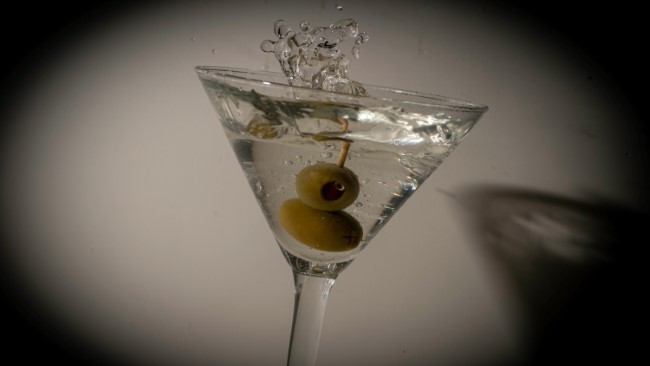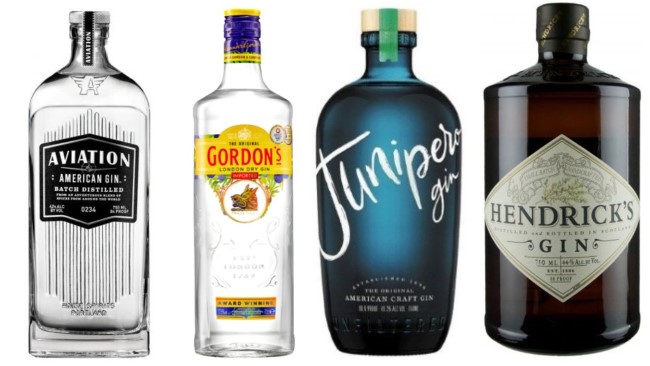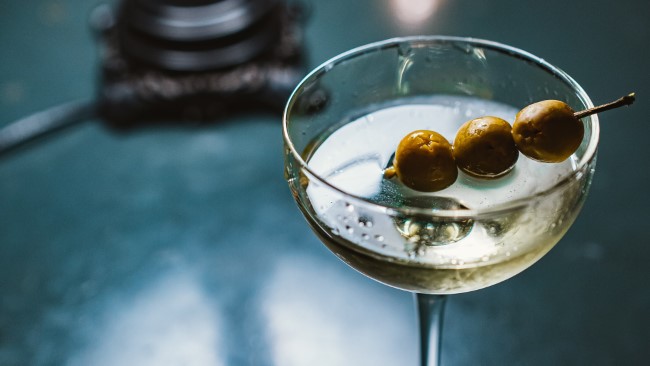Cocktail Queries: What Makes for the Perfect Martini?
Photos via Unsplash, Stanislav Ivanitskiy, Rick Barrett Drink Features gin
Cocktail Queries is a Paste series that examines and answers basic, common questions that drinkers may have about mixed drinks, cocktails and spirits. Check out every entry in the series to date.
We’ve covered a lot of ground in our Cocktail Queries series in the last few years at Paste, answering commonly asked questions about making home cocktails, as well as diving deep into individual spirits to explore topics like the best bourbon under $30, or defining the house styles of iconic Kentucky whiskey distilleries. Now, we’re drilling down on the “cocktail” in the title with this subseries on individual, classic cocktails, in order to answer the question of what makes for a great example of one of these drinks. What’s the key to a great old fashioned, for instance? A great Manhattan? A great daiquiri? A great negroni? We’ll explore them all, and then some.
Our first few entries in this series focused on a few classic whiskey cocktails, and last time we turned to the basis for pretty much every rum cocktail before and since, the elegant, classic daiquiri. The elephant in the room, however, is the cocktail that for decades served as the very symbol for the idea of cocktails. It was the glass pictured on the blinking neon signs of thousands of American bars and taverns, emblazoned with that inviting word, “cocktails.” We’re talking, of course, about the martini.
It’s hard to say whether the martini has really retained the vaulted pedestal it once possessed, in terms of its cultural relevance. People still drink them, obviously, but they don’t feel nearly as omnipresent in bargoing (or home cocktail) scenarios as they’re depicted in popular culture of decades past. I suspect this is mostly a function of a much vaster array of choices available to the average person when they go to the bar, and increased familiarity with a wider range of drinks. In times of yore, perhaps the martini was simply what one ordered as a cocktail, because that’s what you knew a cocktail to be. Today, it seems like the average bar patron has become substantially more educated.
And yet, misconceptions about the martini still abound. There’s still confusion and debate over the simplest matters, like whether your drink should be made with gin or vodka, or whether it should be “shaken or stirred.” There are still the occasional arguments over martini garnishes, and even what constitutes a “martini” in the first place when the term has been co-opted into so many saccharine drink monstrosities.
Let’s put some of these questions to rest once and for all, as we explore the classic martini.

The Recipe
Here, at its most very basic, is a stock-standard recipe for the classic martini, although this is really only the jumping off point for a martini discussion.
— 2.5 oz gin
— .5 oz dry vermouth
Garnish: Lemon peel, or olive
Combine gin and vermouth in a mixing glass with plenty of ice. Stir to chill until very cold. Strain into martini glass (cocktail glass) or coupe. If using lemon peel (“a twist”), express the oils from the peel above the glass and use peel as garnish. If using olive, drop it in.
Simplicity itself, right? But then comes the debate on the ratios of gin to vermouth, whether bitters should be used, and what other ingredients are acceptable in the martini. Let’s discuss each way you might choose to modify that basic structure.
Martini Cocktail Ingredients
Gin
You can make a martini with vodka if you so choose, but don’t try to pretend like that’s the more flavorful version of the drink. The “vodka martini” largely only exists in the cultural consciousness because of James Bond, and we can’t help but think that Ian Fleming likely only wrote Bond’s drink preference that way in a nod to Cold War era tensions, liking the idea that Bond had picked up a taste for Russian vodka at some point. Regardless, the martini is absolutely a gin drink in the historical record, and if you order one at any self-respecting bar, gin will be the default spirit that is used unless you specify otherwise.
But which gin? Now that’s an interesting question, and one where the home bartender has pretty much total freedom of choice. Decades ago, the answer would have been simpler—if you were making a martini, you were probably going to use a very dry, resinous, piney, London dry gin—something like Beefeater, Gordon’s or Bombay. Modern or “new western” gin, on the other hand, has evolved the style in a rounder, sweeter, more approachable direction, where citrus flavors in particular are expected to take precedence over the classical bite of juniper. Many drinkers love new western gins, whether or not they’ve ever heard that descriptor, appreciating their more gentle and fruit-driven flavor profiles. Other gin purists see new western gins as dumbing down the category, replacing complex botanical profiles and classic juniper flavors with more candied notes that are meant to appeal to the masses. On some level, it’s like the debate between modern hazy, juicy India pale ale drinkers and purists who are devoted to the drier, more bitter IPAs of the past.
When it comes to a martini, though, the choice of gin can often be quite forgiving. Because the martini is really only a two or three ingredient cocktail, depending on your use of bitters or garnishes, it’s no big surprise to say that it primarily tastes like whatever you choose. If you enjoy spicier, punchy gins, that gin will shine through brightly in a martini. If you like the sweeter, citrus-driven flavors, they’ll make for a softer and gentler martini. As with most cocktails, however, higher-proof gins are often a better choice from a flavor perspective, as they become less muddled in the process of chilling and dilution. That isn’t to say that some 80 proof Gordon’s can’t make a decent martini—check out our blind tasting of bottom shelf gins to prove exactly that—but it will lack the depth of flavor you find in a martini made with something like 98.6 proof Junipero.
 This is one case where the “correct” gin is the one you like best, but we do suggest something strong.
This is one case where the “correct” gin is the one you like best, but we do suggest something strong.
Dry vermouth
Despite being literally one of only two major ingredients in a martini, dry vermouth somehow remains oddly controversial when it comes to martini recipes. In a similar manner to the Manhattan cocktail, there’s a certain subset of drinkers who simply don’t care for vermouth, and have gradually made efforts to reduce or eliminate its presence in the recipe. Which leaves you with … a glass full of diluted gin, and a garnish.
Suffice to say, the mid-1900s drive toward continuously reducing the ratio of vermouth in a martini isn’t something I find to make a lot of sense. Originally, the ratio may have been as generous as 2:1, or 3:1. Over time, that became more commonly 4:1, or 5:1, or 6:1. You will occasionally see martinis made all the way up to 12:1 or higher, meaning there’s barely a trace of vermouth in the cocktail at all.
Once again, this feels wrong to me. If what you want is a glass full of gin, then by all means enjoy some gin on the rocks, but why bother calling it a martini? Too often, the insistence on less and less vermouth feels like posturing by drinkers who like the idea of being someone who orders a “strong drink,” without realizing that they’re making the cocktail less complex in the process.
Vermouth, in case it needs saying, brings a different dimension of flavor to a martini, adding complex herbaceous and floral notes that may be absent in the base spirit. Vermouth (even dry vermouth) also adds some sweetness and acid, which can help temper the bitterness or more bracing qualities of old-school, juniper-heavy gin in particular. This is all to say, don’t get talked into thinking that cool kids don’t include vermouth in their martinis.
Garnishes
There are a lot of potential martini garnishes out there, but the two most common illustrate two classic routes to modifying a martini’s flavor profile. The old school depiction of the martini often includes an olive garnish, which makes the drink more salty, briny and herbaceous, with a little bit of balancing sweetness from the common pimento pepper filling. The more modern garnish, on the other hand, is a citrus peel, usually lemon or orange, which is held above the drink and expressed—squeezed, in order to spritz its aromatic oils over the surface of the cocktail. This gives the drink a pleasant, bright citrus scent, without modifying its flavor too much. The two garnishes are rarely combined, but there’s nothing to stop you from doing so.
Of course, those who are really into the olive often take things a step further, adding a bit of olive brine to the recipe to make the popular dirty martini. This variant is considerably more salty and often defined by the olive, rather than the rest of the ingredients. Other potential garnishes include a pickled cocktail onion, which historically makes the drink into a Gibson, rather than a martini, or other aromatics like a sprig of rosemary, or even cornichon pickles.
 Olive obsessives will always be drawn to the martini, this is for certain.
Olive obsessives will always be drawn to the martini, this is for certain.
Other Martini Tips and Variations
Here are some other potential options to consider when constructing your own martini recipe.
— Cocktail bitters are another way you can introduce new and unexpected flavors into a classic martini, without visually changing the drink too much. Many recipes you’ll look up these days include citrus bitters such as orange, lemon or grapefruit bitters as a standard part of their recipes, which fits with the general trend toward those more citrus-heavy new western gins. You can however also use spiced bitters, such as classic aromatic bitters, creole bitters or Sichuan bitters, to take your martini’s flavor profile in a significantly more exotic direction.
— The martini is traditionally a stirred drink instead of a shaken drink, and there’s a very good reason for this, which we describe in more detail in this piece. Put simply, the desired profile for a martini includes a full body and silky smooth texture, which is easier to achieve with a drink stirred with ice. A drink shaken with ice whips more air into the mixture, in addition to breaking up the ice more and creating small flakes and chips. The resulting drink has a lighter, frothier texture, which is considered desirable in a cocktail such as the daiquiri, but not in the silky smooth martini. This is another classic case of James Bond leading folks astray when it comes to cocktails.
— The martini is traditionally always depicted in the triangular “cocktail glass” that became so ubiquitously associated with the drink that most people just call them “martini glasses,” but many drinkers (myself included) find these glasses cumbersome, hard to drink from, and prone to spillage. The similar coupe glass has a more solid base, and you may find it infinitely easier to manage.
— And finally, as if this really needs saying, “appletinis,” “chocolate martinis,” “espresso martinis,” etc., are martinis in name only. They’re just sugar-laden, dessert drinks that took advantage of the “tini” suffix, presenting themselves in cocktail glasses to appear more familiar. They do not bear further mention.
Jim Vorel is a Paste staff writer and resident liquor geek. You can follow him on Twitter for more drink writing.